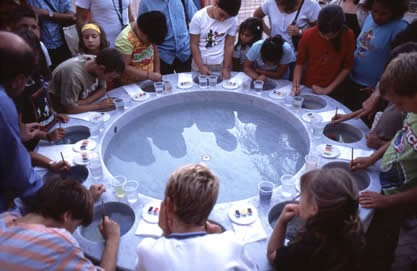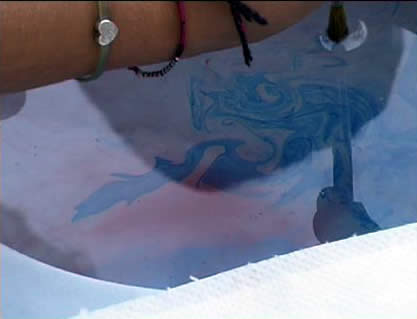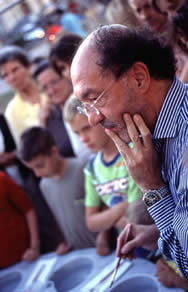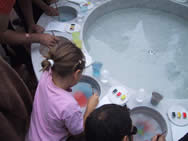Sarkis was born in Istanbul
in 1938, and has lived in Paris since 1964. Active since the 60’s,
which were crowned by the invitation to When Attitudes Become
Form (1969). Since then he has participated in numerous international
appointments, including two editions of Documenta Kassel and three
editions of the Biennale di Venezia, as well as many other exhibitions
around the world. His greatest quality as an artist is the ability
to perfectly conjugate his culture of origin with the contemporary
tradition of Western art, to which he adds elements of the local
culture of the places where he is called to exhibit and intervene.
He does the same with techniques, mixing the more ancient ones with
modern ones, and with a cross-reference to original archetypes,
not without allusions to recent episodes in art. Due to these characteristics,
he moves today between that art which finds an important nucleus
for its own research in anthropology, and so-called "rapport"
art, which finds an intrinsic modality of a piece in the active
involvement of the spectator. The project for Arte all'Arte picks
up one of his recent favorite themes, that is the relationship between
color and transparency - and therefore light, depth, the immaterial,
passage, transformation. He has been developing this for some time
with the use of watercolour and of glass, ancient techniques that
give very modern results, which he carries out in the most varied
forms, such as the memorable series of short videos 25 films de
Sache', 1997-98, which is a short summary of the possibilities of
his work. In a piazza in Poggibonsi, a community meeting point,
Sarkis has created a sort of fountain, made up of 12 small basins
that can be used as containers by anyone who wishes to create original
watercolours. A ritual, a game, a creative project that has Sarkis
as its first animator and as the teacher of the first course, that
will remain a fixture available for the population.


Sarkis, The watercolour fountain, 2003
Piazza Matteotti, Poggibonsi
Project for Arte all’Arte 2003
Photo Ela Bialkowska, view of the installation |
  |


